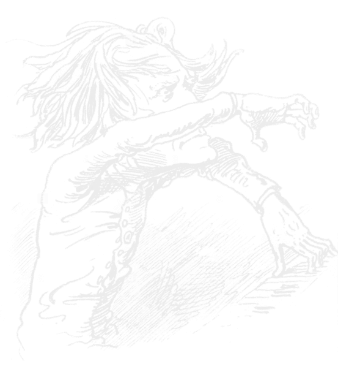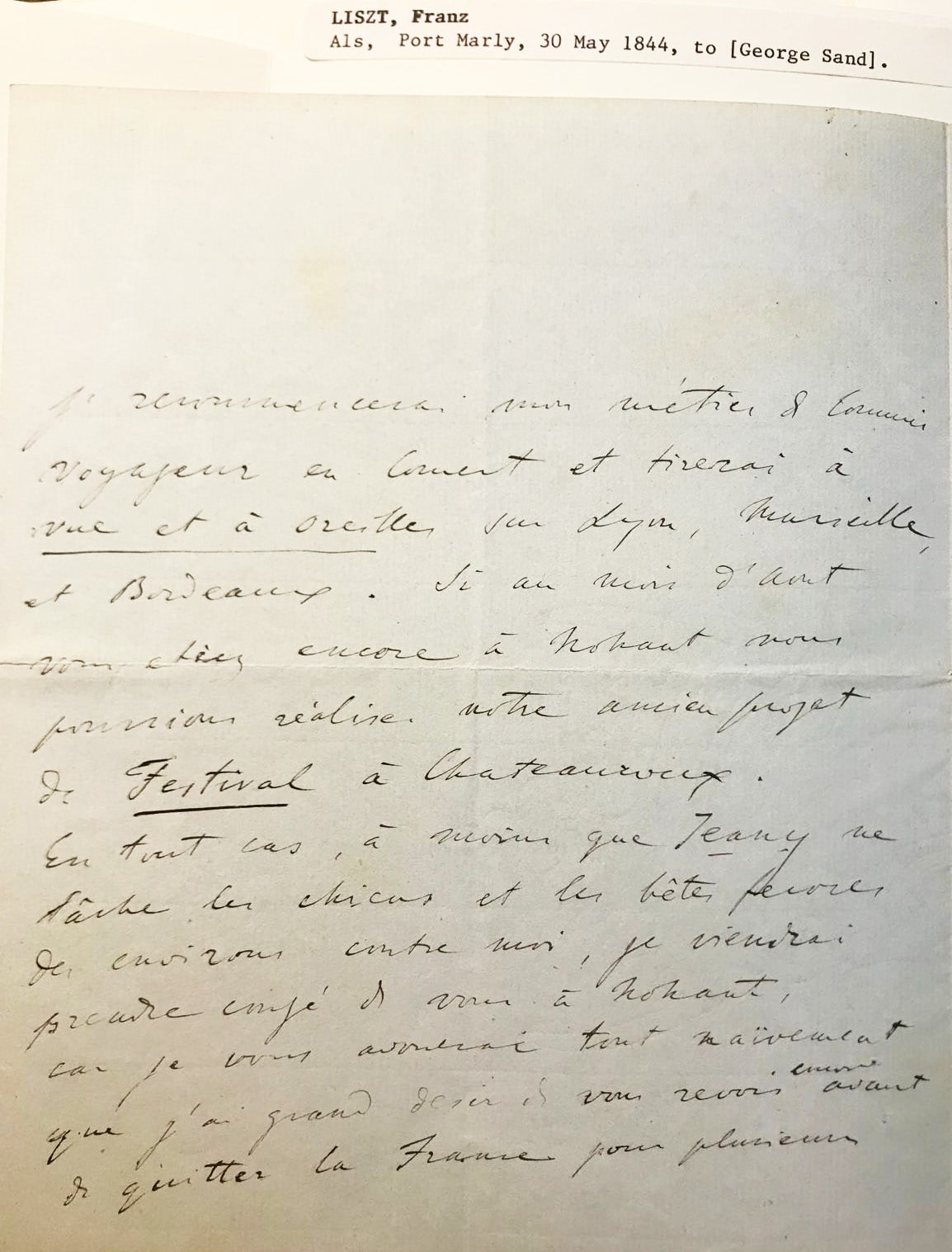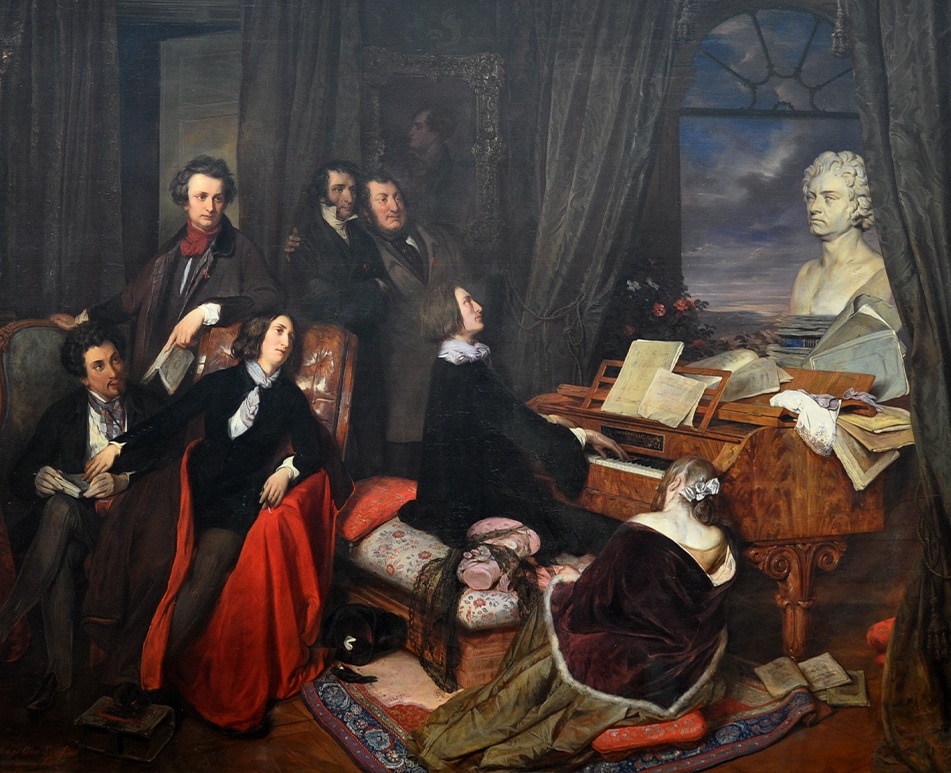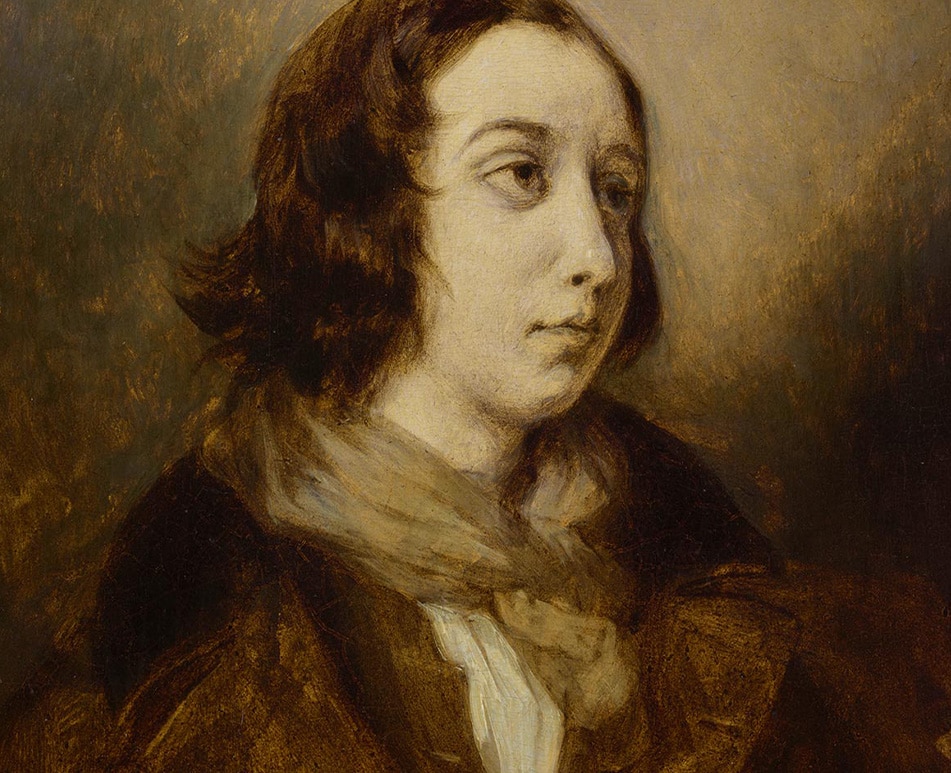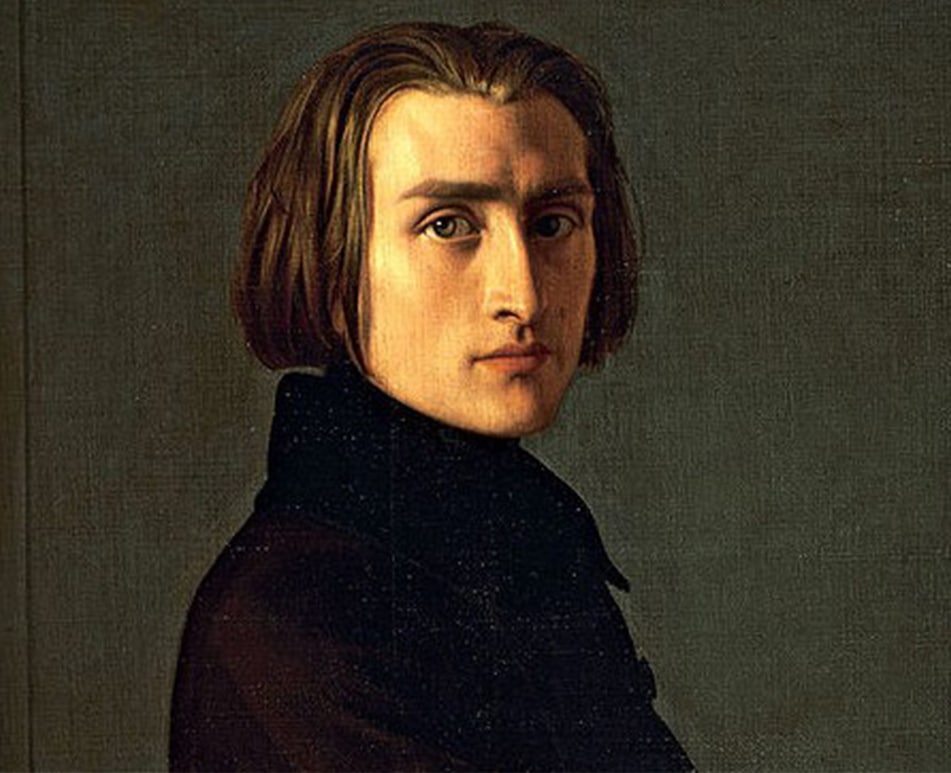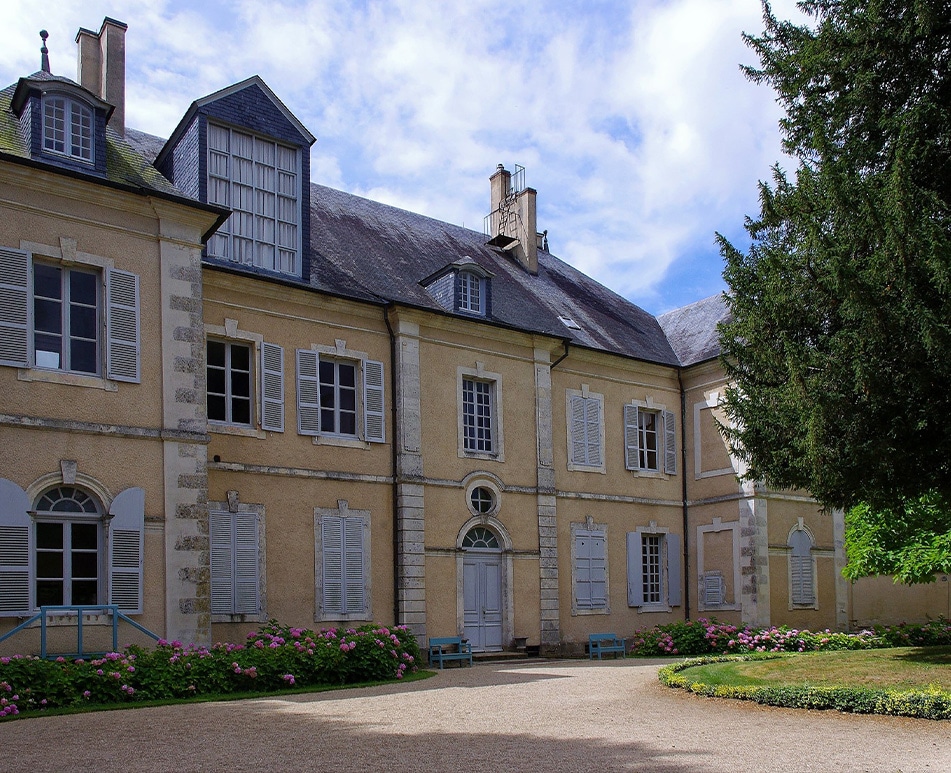Romanticism in Berry
I love Franz, he is in my blood.
Liszt and George Sand
‘The work of certain artists is inseparable from their life. Totally identified with one another, they are like those immortal beings in fables whose existence is one with a tree in a forest’, writes Liszt to George Sand in the second of his Letters of a bachelierès musique.
This definition could be applied equally to both these artist-friends. Liszt was introduced to George Sand by Alfred de Musset at the end of 1834, at the outset of his liaison with Marie d’Agoult. The couple visited Nohant twice in 1837, shortly after George Sand had met Chopin the previous year at the instigation of Franz and Marie, to whom Chopin would dedicate his collections of Etudes. Sand’s friendship, indeed passion, for the musician would fade with time, as her relationship with Liszt’s temperamentally difficult mistress became more fraught. Marie’s qualities as a writer could not rival those of her lover’s friend and role model, and Liszt himself confessed, ‘Madame d’Agoult shed many a tear over the glory of George Sand’.
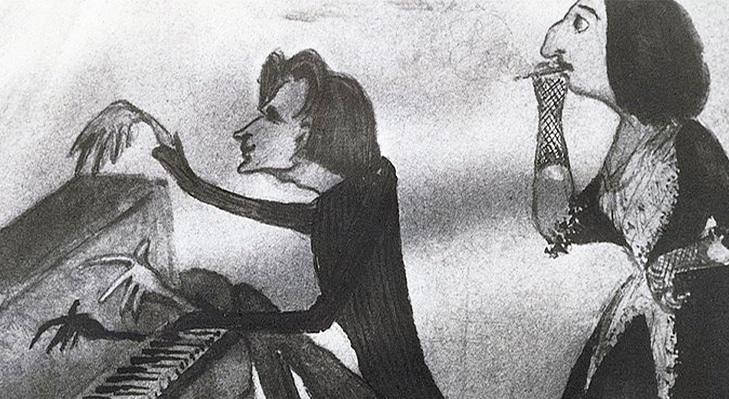
Liszt et George Sand – Caricature de Maurice Sand
Humanism and sharing
Liszt and Sand shared the social and religious humanism preached by the influential writer, priest and philosopher Félicité de Lammenais, and these brotherly values are evident in their work. For the two friends, who were to dedicate important works to one another and who had many beliefs in common, art is simply an albeit very special way to become closer to both God and mankind. Thus Sand to Liszt: ‘Yes, music is prayer, it is by its very nature faith, friendship and closeness…’.
As well as the glowing love of nature which was common to artists at that time, a similar pantheism runs through both artists’ works, particularly strong in the three volumes of Liszt’s Years of Pilgrimage, which are also a travel diary of which George Sand was a part, at the beginning of Franz and Marie’s escapade in Switzerland.
If you were still in Nohant in August, we could revive our old dream of a festival in Châteauroux.
Liszt in Nohant
‘I went in search of shelter to a faraway corner of Berry, that prosaic province so divinely rendered poetical by George Sand. There, in the home of our illustrious friend, I enjoyed three months of life lived to the full, of which every hour is religiously preserved in my memory.’ Franz Liszt
It was while staying in Nohant that Liszt was to make transcriptions from two composers central to him and his work, Beethoven and Schubert. Beethoven first, his musical god (‘for us musicians Beethoven’s works are like the pillars of cloud and fire which led the Israelites through the desert, a pillar of cloud to lead us by day, a pillar of fire to light our way by night, so that we can walk both day and night’). Of his symphonies, the famous 5th and 6th (Pastoral) were transcribed in Nohant, to become, in Liszt’s own words, true ‘piano scores’ in their own right, impressive pianistic ‘anatomical revelations’ of the Bonn Titan’s masterpieces. Sand was to write an astonishing phantasmagorical text about this Pastoral Symphony in her Sketches and hints.
Schubert was a kind of musical brother in Liszt’s eyes (‘Oh, genius, eternally bubbling over with love! Dearest hero of Heaven and my youth!’). Liszt transcribed nearly 60 of his Lieder, some of them whilst in Nohant, such Goethe’s famous Erlking, which Sand referred to directly and very poetically in her Daily Interviews. Further proof of the profound elective affinity linking these two exceptional figures of burgeoning Romanticism, blossoming in the soil of George Sand’s native Berry.
